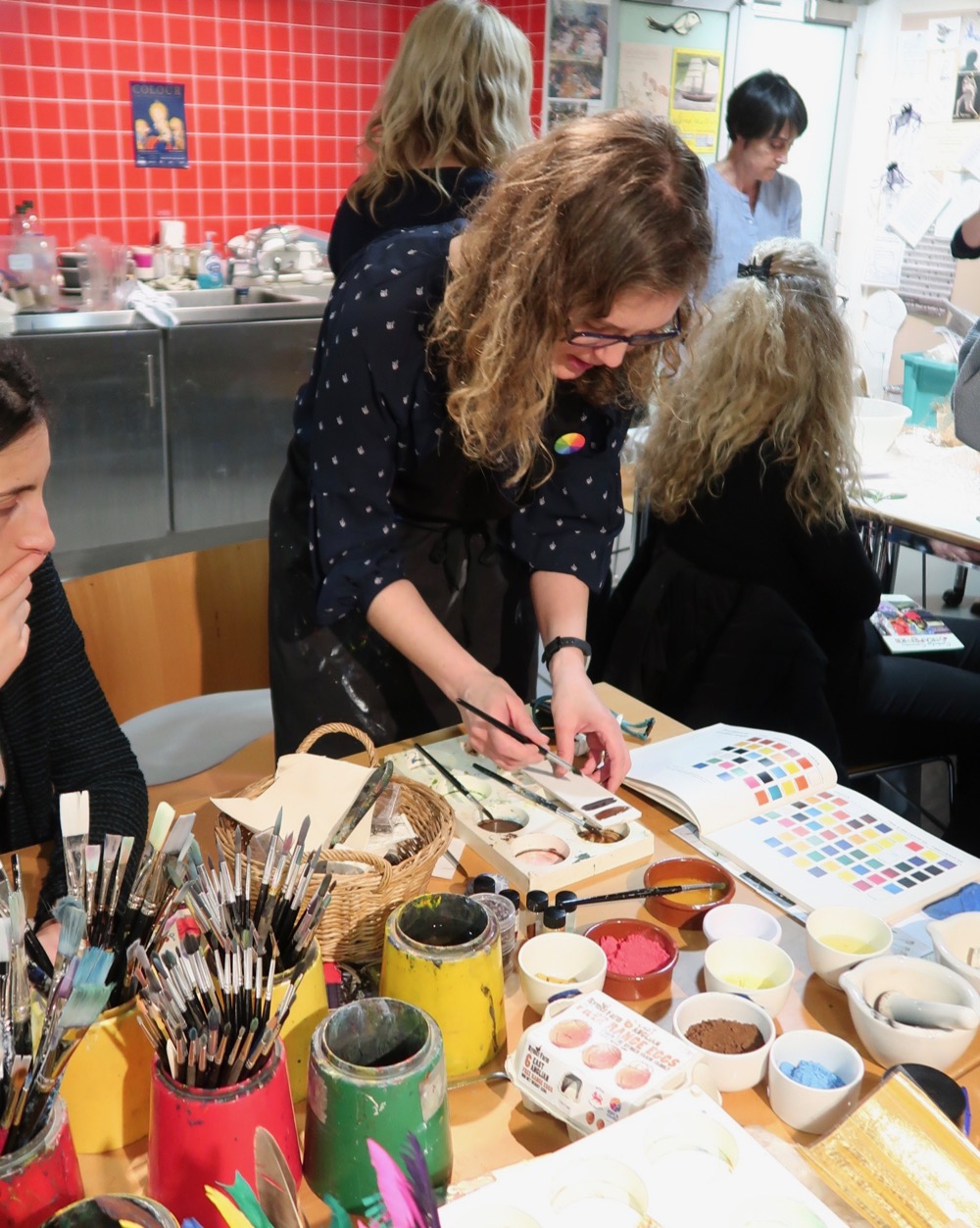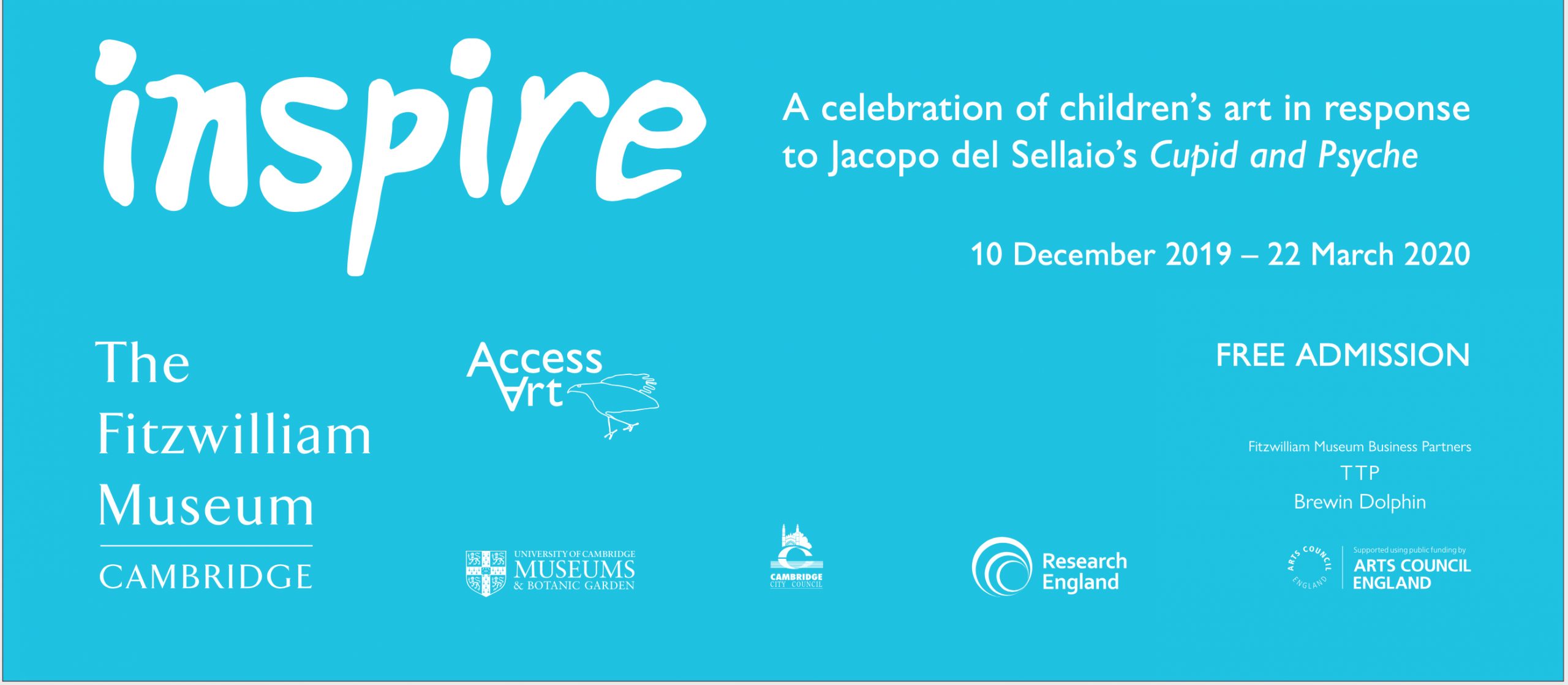Inspire 2020: Introducing Colour and Egg Tempera on a Gesso Panel
This is one of a series of posts telling the story of Inspire: A Celebration of Children’s Art at the Fitzwilliam Museum, Cambridge from the 10th December 2019 until the 22nd March 2020.
This post shares how egg tempera was used as a medium in the Italian Renaissance and how teachers interpreted the processes involved in the teaching studio at the Fitzwilliam Museum, Cambridge with AccessArt and the Fitzwilliam Education Team, as part of the CPD programme for Inspire 2020.

Part One: Looking at Renaissance Processes
As part of Inspire 2020 CPD, Joanna Neville and Rowan Frame from the Hamilton Kerr Institute showed primary school teachers how they had reconstructed a Renaissance painted panel Virgin adoring the Child by Jacopo del Sellaio from the Fitzwilliam Museum, Cambridge, using historically informed techniques and materials that the artist is likely to have used in his Florence studio when he created the panel in 1473.
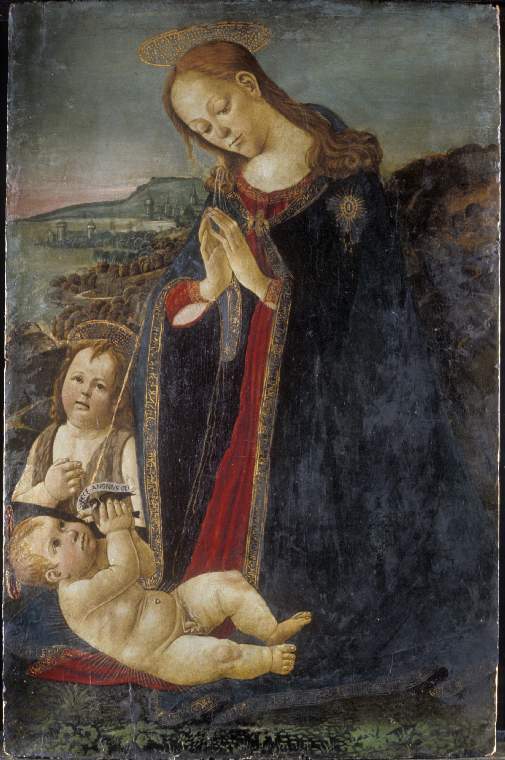
In their presentation, they showed the very elaborate, labor-intensive processes involved in the creation of their reconstructions from the preparation of the wooden panel with gesso (plaster), followed by finely grinding pigments and applying them using egg tempera and the final application of gilding.
Jo and Rowan have shared their PowerPoint presentation here, where you can read more about the materials and processes used in the Renaissance to create a painted panel.

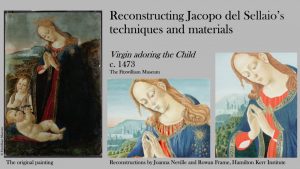
Part Two: Teachers Replicate Renaissance Processes
The materiality of Del Sellaio’s painting is clear to anyone fortunate enough to see it in the real. From the physicality of the wooden panel to the beauty of the earthy hues painted with such deliberate strokes and then gilded, these are works of great mastery and patience and materially they are precious too.
Alison Ayres the Fitzwilliam Museum’s studio artist and Kate Noble, education officer, led teachers in making their own explorations of Renaissance processes using a “mock” egg tempera made by binding school powder paints with egg yolk applied onto a piece of prepared plywood.

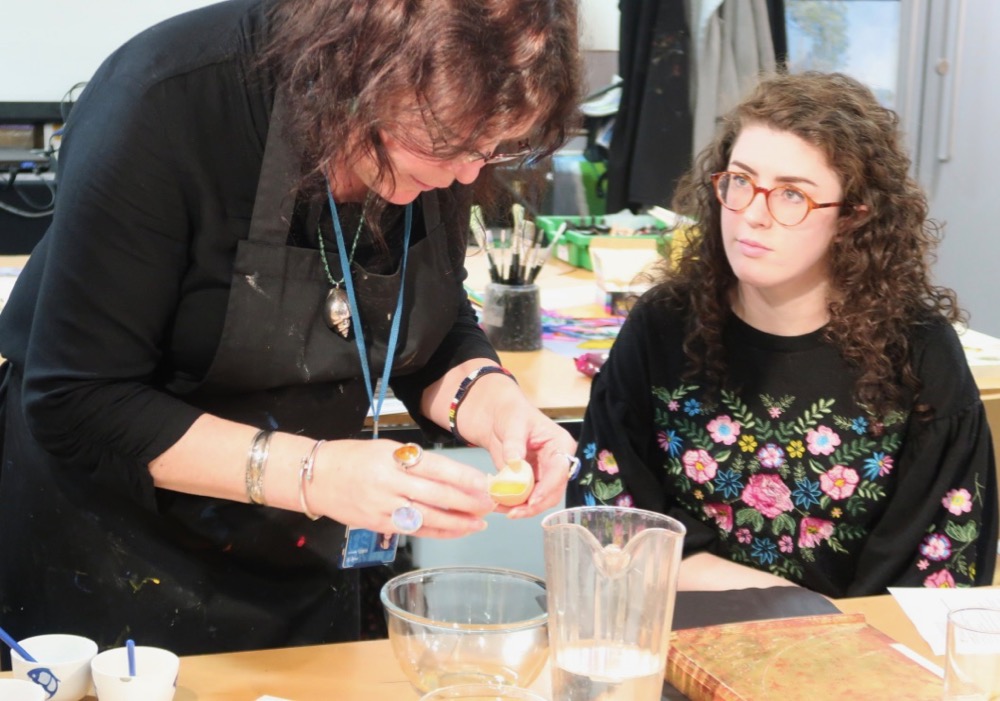
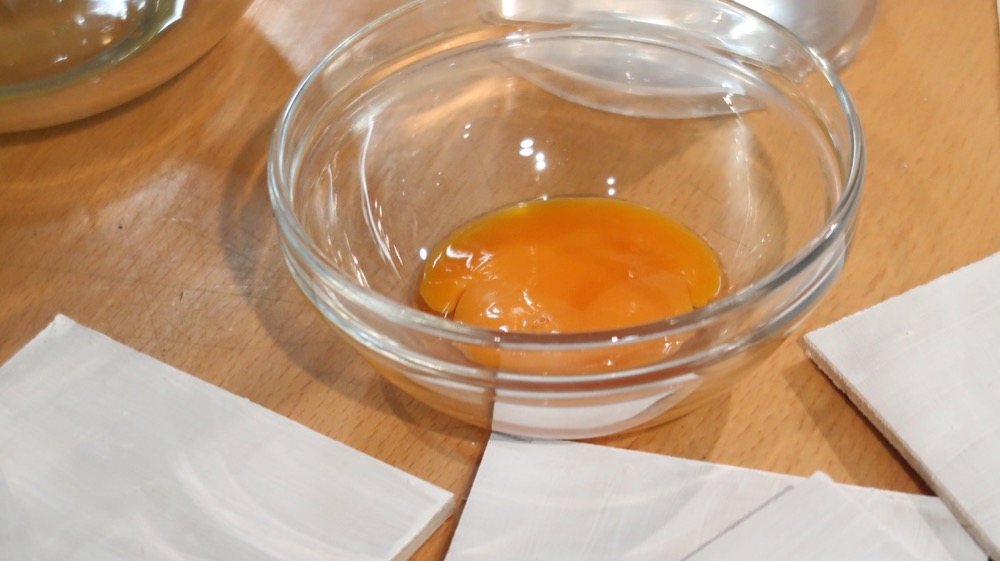

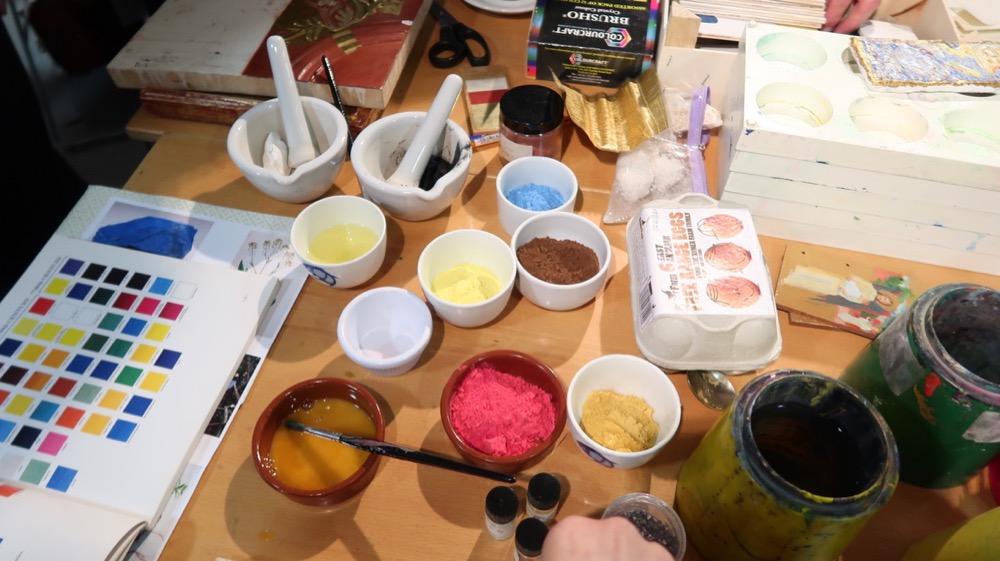


Part Three: A Bit More about Colour

Colour is a place where science and art meet and in The Fitzwilliam Museum, Cambridge, lines between disciplines and knowledge are fluidly and constantly crossed. So beyond the symbolic, historical, spiritual, mythical, ceremonial understanding of paintings there is also a deep understanding of their physical structures, including all about the pigments used and how they were bound to the panels.
The museum has its own laboratories and scientific experts who work from conservation to material analysis of its artworks and the depth of scientific understanding of its collection is deep.
Sharing the materiality of del Sellaio’s processes with teachers was one of the most exciting outcomes of the Inspire 2020 project and as a result many children over its course have enjoyed extermination with the creation of their own colorants.
In the CPD sessions Kate demonstrated how black/grey could be created by grinding charcoal and white by grinding down chalk to replicate how Renaissance masters would have prepared their pigments. In the Renaissance minerals, precious rocks and earth would be used to create pigments.
Follow this link to see a beautifully described and interactive Overview of Artists’ Materials by the Fitzwilliam Museum, Cambridge.




Part Three: “The West Wind” – a Sample by Portia Drewry in Year Six
Inspired by Zephyrus, or The West Wind, one of the characters on the painted wooden panel in The Story of Cupid and Psyche by Jacopo del Sellaio and the focus of Inspire 2020, at the Fitzwilliam Museum Cambridge, Portia sets to work to make her own egg tempera painting on a wooden panel.
We hope this will inspire teachers to take egg-tempera into the classroom!

To Start – “The ground”
“Preparing the wooden panel with glue, gesso grosso and then gesso fine” Inspired by Jo, Rowan and Ali
This method was inspired by the Renaissance process of painting on a wooden panel on gesso and egg tempera as described by Jo and Rowan.
In the Renaissance, masters would take great and enormous care in preparing their wooden panels, which in the case of Del Sallaio’s was made of poplar. Layers of gesso – similar to plaster, were carefully prepped in layers applied to the wooden panels and painstakingly smoothed ready for the paint.
Portia’s version:

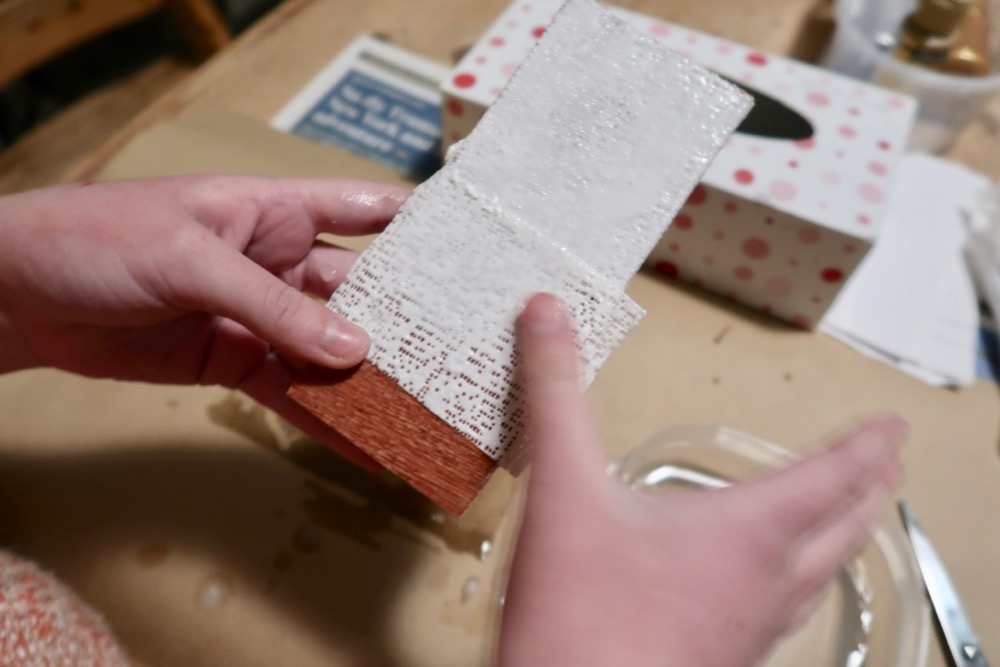

Find out more about How to Use Modroc Here.
“The underdrawing” – Transferring the motif to the panel

Find out more about the Story of Cupid and Psyche by Jacopo del Sellaio as told by Kate Noble.

“The paint” – Preparing the pigments and mixing the egg tempera

“The gilding” – Adding the gold!

To take egg-tempera into the classroom
You Will Need:
- Plywood off-cuts
- A bucket or bowl of water
- Modroc
- Basic powder paints (red, yellow and blue) and brushes
- An egg
- Gold paint (Scola)
Many thanks to the wonderful teachers who came to this CPD session for sharing their ideas and processes with AccessArt.
Many thanks to Alison Ayres, the Fitzwilliam Museum’s studio artist, for her support in the studio and sharing her knowledge and Holly Morrison for her consultation and in preparing materials for Inspire 2020 Project.
A huge thank you to Joanna Neville and Rowan Frame from the Hamilton Kerr Institute for sharing their deep knowledge of Renaissance painting techniques with Inspire 2020.
Many thanks to Portia Drewry for sharing her artwork and Francesca Pellegrini for taking photos at the kitchen table.
This post was written by Sheila Ceccarelli and edited by Kate Noble and Paola Ricciardi, senior research scientist at the Fitzwilliam Museum, Cambridge. Photos were taken by Sheila Ceccarelli and Francesca Pellegrini.
Many thanks to ScolaQuip for providing their easily accessible, but high-quality materials for this project.
Go back to Inspire: A Celebration of Children’s Art in Response to Jacopo del Sellaio’s Cupid and Psyche
Inspire – December 2019 to March 2020, was an exhibition of art made by primary school children and celebrated creativity in Cambridgeshire schools. It championed the on-going importance of cultural learning and the visual arts for all children and young people.
Based on the National Gallery’s Take One Picture, The Fitzwilliam Museum and AccessArt teamed together to offer free Inspire 2020 CPD (Continued Professional Development for Teachers), focusing on one painting, Cupid and Psyche by Jacopo del Sellaio, as a source of ideas and inspiration.
Del Sellaio’s Cupid and Psyche was on display next to the children’s work in the Octagon Gallery.
With very special thanks to Kate Noble, Miranda Stearn, Sarah Villis, and Holly Morrison for making this project happen and Alison Ayres.

